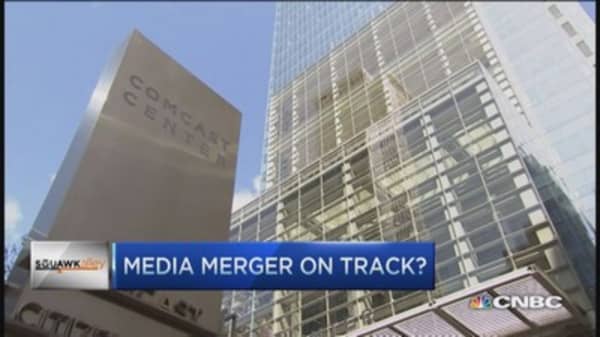Just how, exactly, do cable TV companies make their money?
That question may lie at the heart of the FCC's ongoing review of the proposed cable industry megamerger between Comcast, which owns NBCUniversal, parent company of CNBC, and Time Warner Cable. The answer, it turns out, is neither simple nor clear-cut, especially in a time of rapid technological change and shifting TV viewing habits.
The economics of television started out fairly simply. Back in Don Draper's day, broadcast networks sent their signal filled with entertaining shows to anyone willing to watch their advertising, which paid most of the bills. If you lived in a place where the signal didn't reach, you could pay a cable company a monthly fee to bring it to you over a wire.
Then came "premium" channels—like HBO and Showtime—that let you watch TV over the cable without watching ads. Soon "broadcasters" agreed (for a fee) to send their shows over the cable.
Got a question about business or personal finance?
Send it along to Explains@cnbc.com
Every week, the world of business and finance brings news that seems designed to confuse most of us. So CNBC Explains wants to hear from you. Each week, we'll answer as many of your questions as we can. (Like most readers, we'd also like to know your first name and where you're from. We may also edit your questions for space.) Any question is fair game.
So now program producers generated two streams of revenue—ads and subscription fees—collected by cable operators who packaged programs in "bundles."
Cable operators also get paid more than once—for the service they bring to your TV, the set top boxes you rent, the program packages you buy and the local ads that pop up in basic program channels you watch.
Read More DOJ may demand 'substantial' concessions from Comcast-TWC: Analyst
Just how much of your monthly payment goes to the program producers is the subject of periodic negotiations between cable companies and program networks. (When those talks break down, both sides take out angry full-page newspaper ads and—occasionally—one side or the other pulls the plug until the network can come to terms.)
All went—relatively—smoothly in the television industry until the Internet came along. That meant a whole new group of companies—including phone companies charged a monthly fee for a separate wire to your home—could sell you access to the Web. It didn't take long for the cable companies to figure out to sell phone service to their TV subscribers.





